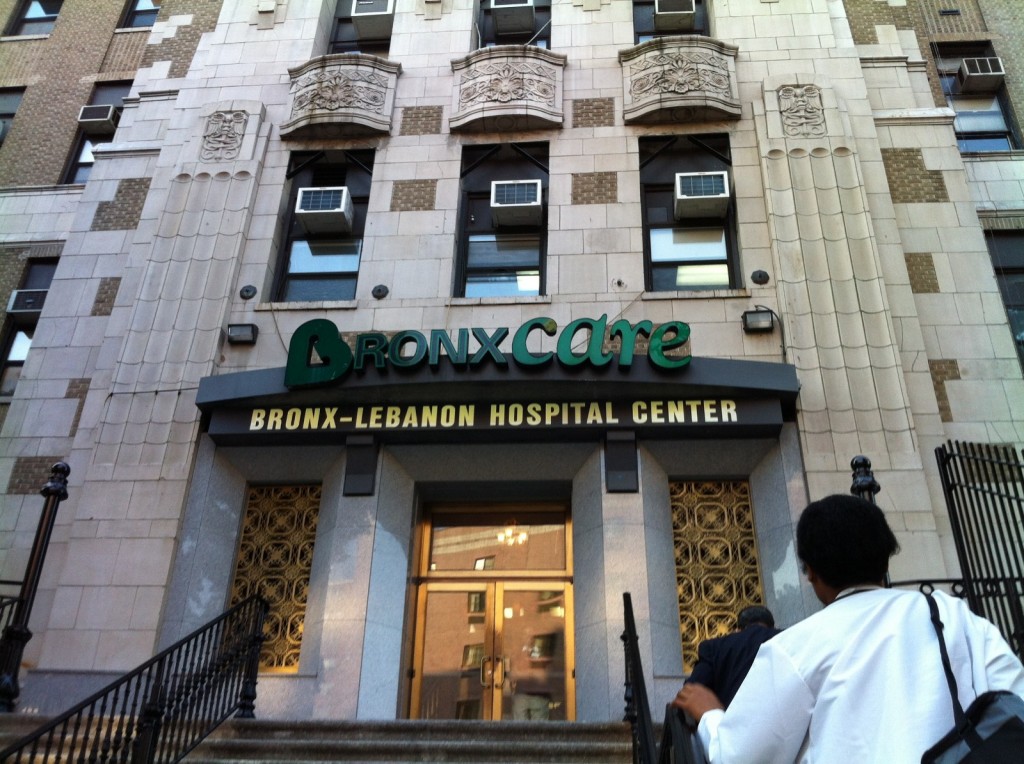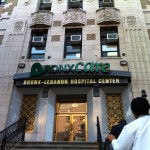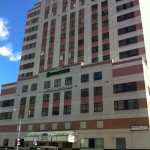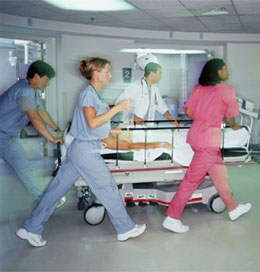Family Medicine at Bronx-Lebanon Hospital

It’s amazing how time flies. I’m already a little more than half-way through this rotation! The family medicine rotation at Bronx-Lebanon Hospital is 6 weeks total and during this time, we are assigned to 3 weeks of inpatient shifts and 3 weeks of outpatient shifts. This past week, I just finished my outpatient portion, and have started my inpatient portion.
Here is a little bit about the Family Medicine Rotation at Bronx-Lebanon Hospital:
Inpatient
The 3-week inpatient portion of the rotation is done at Bronx-Lebanon’s main hospital on Grand Concourse, on the 16th floor in the Family Medicine unit. The days start at 7am and usually ends around 9pm, 4 days a week. On Thursdays at 4pm, we attending Grand Rounds (lectures), and they usually last for 2 hours or so. Some students are assigned to work Friday-Monday with Tuesday-Thursday off, while others are assigned Monday-Thursday, and others Tuesday-Friday. There are no night shifts. I got assigned to the Friday-Monday schedule along with 4 other AUC students. The floor that we work on is specifically a family medicine unit, but I don’t feel it’s that much different than an inpatient internal medicine floor. On the first day of inpatient when we arrived at the floor, the residents and students quickly work out which student is going to work with which resident. We then work with this resident closely for the rest of the three weeks. We work under the resident while the resident works under the attending, and because of this, there isn’t as much interaction with the attendings compared to the outpatient experience or rotations in Miami.
Working with residents can have its benefits, however. For one, they are newer in their careers and therefore can give a lot of advise on board exams, residency application process, etc, because they had just gone through that process not too long ago. Many residents are also more willing to teach students different skills. Working with residents also gives us insight into what it’s like being a resident. This is something I find useful, and something I never experienced in Miami or the UK. This rotation in New York was my first time working directly with residents.
In terms of the experience, there is much more “scutwork” in the inpatient shifts than with outpatient. I feel it is probably because the residents are all very busy (and stressed), and they want students to help them out. It’s doesn’t seem easy being a resident, and the atmosphere of the inpatient hospital unit can be very tense. Some “scutwork” like drawing blood or doing ABGs are useful skills to learn, and inpatient is a great opportunity for getting the practice. Others, like billing paperwork, making phone calls, and delivering things between different hospital departments are not as contributory to our education, but unfortunately there is a lot of it that needs to be done whether one likes it or not. Nevertheless, the resident I’m with is very willing to teach and answer my questions, so I can see myself taking home something from this part of the rotation. Here’s some of the stuff I’ve done as a student in the inpatient portion of Bronx-Lebanon:
- Billing (paperwork, filling out diagnostic codes)
- Drawing blood (venipuncture or through picc line)
- Digital rectal exam, testing fecal occult blood
- Collecting stool and urine samples
- Sending things to the lab
- Looking up information for residents
- Making phone calls (scheduling appointments, ordering consults, ordering radiology, etc.)
- CIWA Score
- Translate (if you know Spanish)
- History and Physical on patients
- Typing progress notes, admission notes, etc. into the computer
- Answering phone calls
Outpatient
The outpatient portion of the rotation lasts for 3 weeks. Unlike in Miami where students are assigned to specific attendings, here at Bronx-Lebanon, we are instead assigned to a specific clinic, either the Wellness Center or Fulton Center (both at Bronx-Lebanon’s Fulton Street hospital location), or at Ogden Center. The Fulton Center has mainly residents working there, whereas Wellness has mainly attendings. My fellow AUC colleagues Lina, Jon, and I were placed at the Wellness Center, and therefore we worked directly with attendings rather than residents. There are several attendings there at the Wellness Center, and they told us we were free to follow whichever attending was available that day. For the first few days, I followed a few different attendings to see which one I liked, and eventually settled on one main attending. On certain days, my attending may not be at the clinic, and in these cases, I followed other attendings that were there that day. It is good to experience a few different doctors to compare their approaches to patient care, but it is also important to stick with one attending for a larger portion of time in order to develop rapport, a good working relationship, and have him/her know you well enough to give you an evaluation, which are required for our grade for the rotation.
Letter of recommendations (LORs) are very important to have when applying for residencies. By the time we apply for residencies during our fourth year, we are required to have at least 4 LORs, which is the number we can submit to each residency program we are applying to. Because of this, it is important to ask for and collect LORs from different attendings during your rotations. In my experience in other rotations, some attendings may not feel comfortable writing you a letter of recommendation after only 2 weeks of working with them. But here in Family Med at Bronx-Lebanon, because we get three full weeks of direct one-on-one time with the outpatient attending, it’s a great opportunity to establish enough rapport to ask for a letter of recommendation. I’d highly recommend asking for one during this time.
For outpatient shifts, we usually work from 8am to 5pm, 5 days per week. On Thursdays, we get off at 4pm to attend Grand Rounds (lecture) for 2 hours. From 8:15am to 8:45am or so, we usually have a short lecture done by either an attending or resident. Afterwards we report to our attendings. The attendings usually start the day with a staff meeting, followed by seeing patients until 5pm or so. The attendings are nice about giving us a lunch break, and I usually either go to the hospital cafeteria or try a restaurant outside the hospital with some of my AUC classmates.
I really enjoyed my experience in outpatient. My attending was very knowledgeable and nice, and was great at teaching students and answering my questions. She also liked asking us questions to test our medical knowledge (which I soon discovered I really need to work on), and every day, she assigns us topics to look up, of which we give a presentation to her the next day. After 3 weeks with her, I’ve given so many presentations on various important topics, and I feel like I’ve learned a lot. My attending also lets us see patients by ourselves. We get access to the patient charts on the electronic medical records. We get our own examination room, bring in the patients, and take a history and physical completely by ourselves, after which we present our findings to the attending and give our assessment and plan for the patient. I felt it was really good training, because these tasks are what we will be doing as doctors, as well as demonstrating on the USMLE Step 2 CS board exam. Not every attending or resident in outpatient will let students do as much as my attending did, but in my experience, many of them may, especially if you show you are enthusiastic to learn and work hard.
In the outpatient clinics, there may be specialists that come in on certain days. For example in Ogden Clinic, there’s someone who comes in on Mondays to see patients who need prenatal care, and on Tuesdays, another specialist comes in see transgender patients (who are scheduled on those days to get hormone treatment). At Wellness, a nutritionist comes in on Tuesdays and Thursdays. On other days of the week, a GI specialist, diabetic skills counselor, or retinal imaging specialist may also come to the clinic. It’s a great opportunity once everywhile to follow one of these specialist for a few hours, and many of the attendings are great at letting you do so (and even encourage it). I followed the nutritionist for an afternoon and learned how to plan out meals for hypertensive and obese patients, and learned how to teach patients how to count calories. I also got to experience doing retinal imaging another time. It’s great having these diverse experiences available, and makes the rotation interesting.
Conclusion
The outpatient experience at Bronx-Lebanon is very good, with students getting hands-on experience with patients, and working closely with attendings and residents, who are often enthusiastic in teaching. The inpatient experience, on the other hand, have longer hours, more opportunities to do procedures, yet more labor in a tenser environment. However, I believe our experience is ultimately what we make of it, and it’s important to make the best of every situation.



















Sounds like a good opportunity! Agree everything is what we make of it
🙂